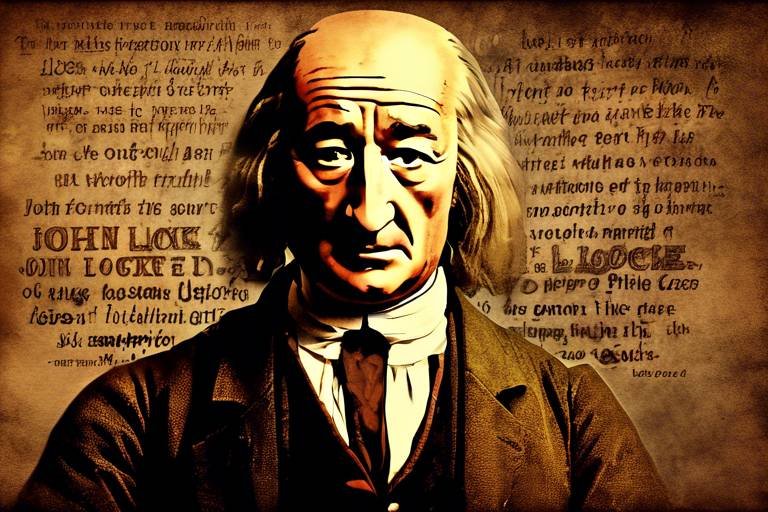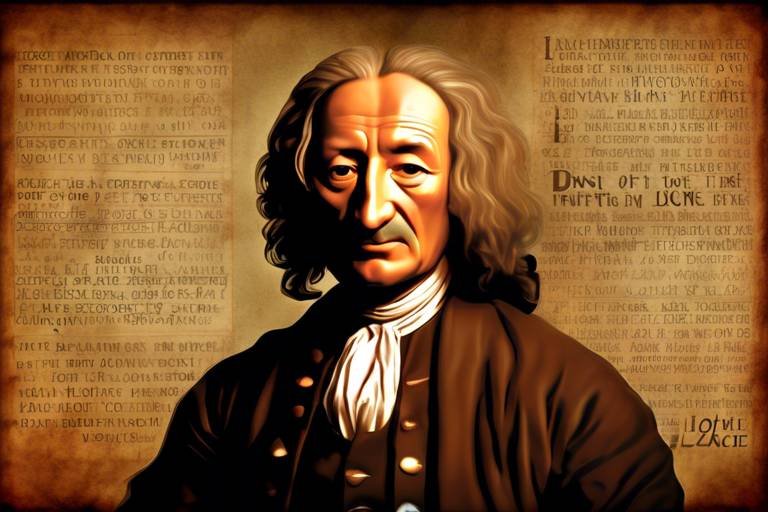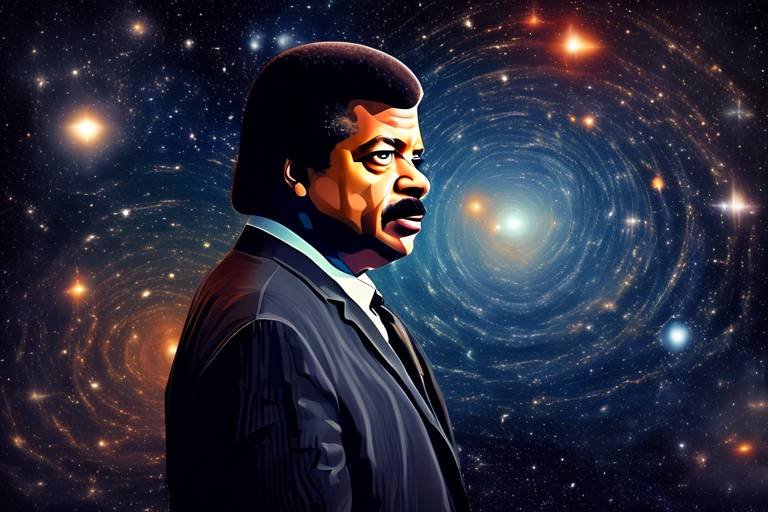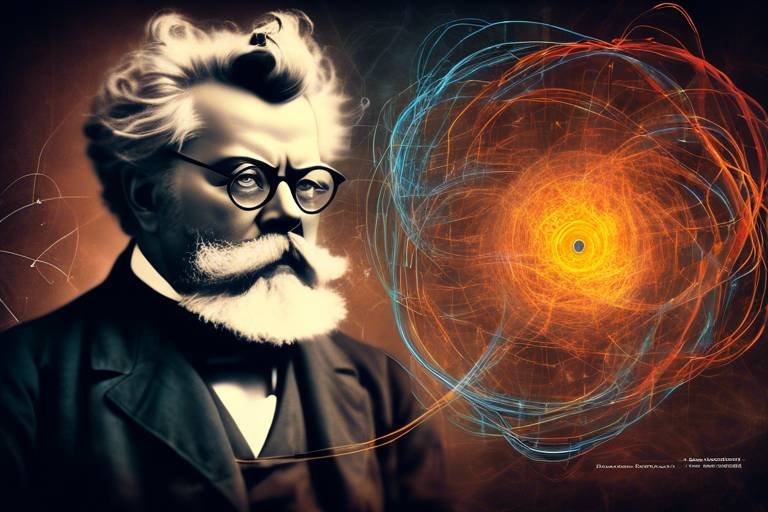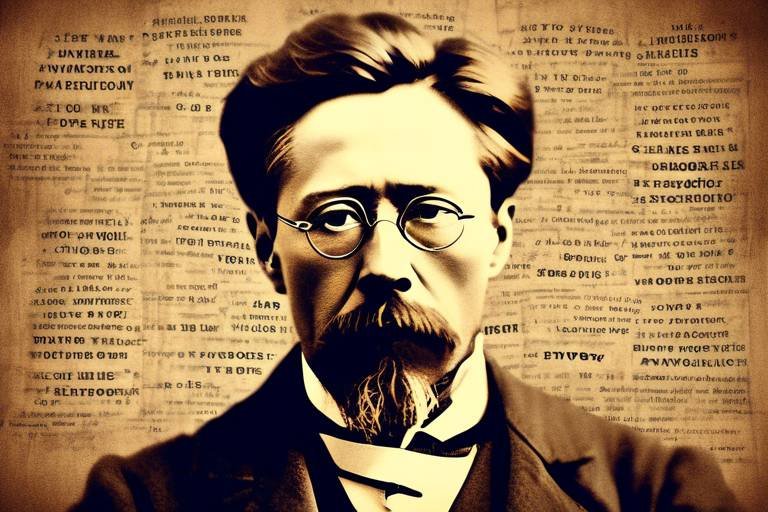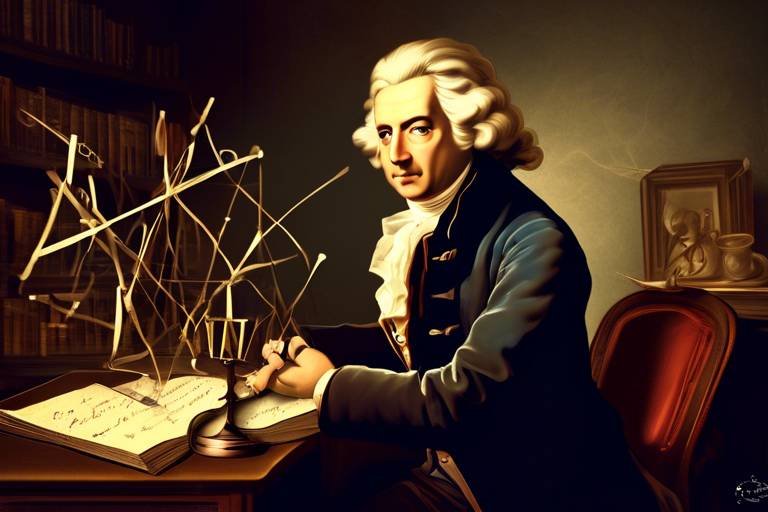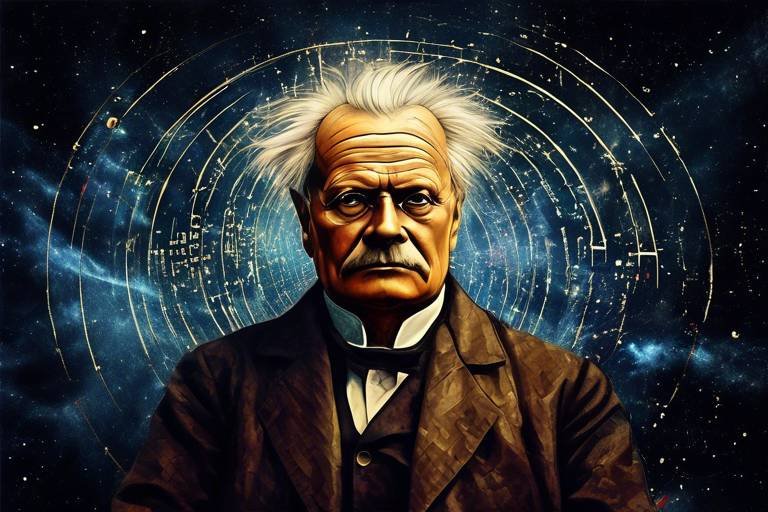The Contributions of Michael Faraday to Electromagnetic Induction
This article explores Michael Faraday's groundbreaking work in electromagnetic induction, highlighting his experiments, theories, and lasting impact on science and technology. Faraday, a name synonymous with the birth of modern electromagnetism, revolutionized our understanding of electricity and magnetism through his relentless curiosity and innovative experiments. His work not only laid the groundwork for electrical engineering but also sparked a technological revolution that continues to influence our daily lives. From powering our homes to enabling communication, Faraday's contributions have become the backbone of modern civilization.
Michael Faraday's formative years played a crucial role in shaping his scientific curiosity and ingenuity, leading him to become one of the most influential scientists of his time. Born on September 22, 1791, in a humble family in Newington Butts, England, Faraday's early life was marked by poverty. Despite these challenges, he was a voracious reader and developed an insatiable thirst for knowledge. His education was limited, but his passion for science was ignited when he attended lectures by the renowned scientist Humphry Davy. This pivotal moment opened the door to an apprenticeship at the Royal Institution, where he honed his skills and began his journey into the world of science.
Faraday's innovative experiments laid the foundation for understanding electromagnetism, demonstrating how electric currents can induce magnetic fields and vice versa, revolutionizing the field. His work was characterized by meticulous experimentation and a keen observational ability. One of his most significant contributions was the discovery of electromagnetic induction, where he observed that a changing magnetic field could produce an electric current. This groundbreaking realization was not just a scientific curiosity; it was the spark that ignited the development of technologies that we now take for granted.
In 1831, Faraday discovered electromagnetic induction, a phenomenon where a changing magnetic field generates an electric current, a principle that underpins modern electrical engineering. This discovery was akin to finding a hidden treasure in the vast landscape of science. Faraday's experiments involved moving magnets in and out of coils of wire, which led to the realization that the motion of the magnet created an electric current in the wire. This relationship between electricity and magnetism was revolutionary, paving the way for future innovations in energy generation and transmission.
Faraday formulated his law of induction, which quantifies the relationship between the change in magnetic flux and the induced electromotive force. This law is a critical principle in physics, stating that the induced electromotive force in a closed circuit is directly proportional to the rate of change of the magnetic flux through the circuit. To illustrate this, consider the following table:
| Magnetic Flux Change | Induced EMF |
|---|---|
| Increasing | Positive EMF |
| Decreasing | Negative EMF |
This law not only deepened our understanding of electromagnetic phenomena but also served as a foundation for the development of various electrical devices.
The practical applications of Faraday's law are vast, influencing technologies such as electric generators, transformers, and motors, which are essential in today's energy systems. Imagine a world without electricity—no lights, no appliances, no communication. Faraday's work has made it possible for us to harness electrical energy efficiently. For instance, electric generators convert mechanical energy into electrical energy using Faraday's principle, while transformers adjust voltage levels for safe transmission across power lines. These applications are not just theoretical; they are integral to the infrastructure that powers our modern society.
Faraday's contributions not only advanced theoretical physics but also paved the way for technological innovations, enabling the development of electrical systems that power modern society. His discoveries laid the groundwork for the electrical revolution of the 19th century, leading to the invention of various devices that have transformed our lives. From the electric light bulb to the telegraph, Faraday's influence is evident in countless technologies that have shaped the world.
Faraday's legacy endures through numerous awards, institutions, and scientific principles named in his honor, reflecting his profound influence on the scientific community. His work has inspired countless scientists and engineers, making him a towering figure in the history of science. Schools, research institutions, and even units of electrical measurement (the farad) bear his name, a testament to his enduring impact.
Faraday's work inspired generations of scientists, including James Clerk Maxwell and Albert Einstein, who built upon his discoveries to further advance the field of electromagnetism. Maxwell's equations, which describe how electric and magnetic fields interact, were heavily influenced by Faraday's findings. This chain of inspiration highlights how one scientist's work can ripple through time, sparking new ideas and innovations.
Faraday was a passionate advocate for science education, engaging the public through lectures and demonstrations, making complex scientific concepts accessible to all. He believed that science should not be confined to the elite but should be shared with everyone. His famous Christmas lectures at the Royal Institution captivated audiences and inspired many to pursue careers in science. Faraday's ability to communicate complex ideas in an engaging manner was truly remarkable, making him a beloved figure in the scientific community.
- What is electromagnetic induction? - It is the process by which a changing magnetic field induces an electric current in a conductor.
- How did Faraday contribute to modern technology? - His discoveries laid the foundation for electric generators, transformers, and motors, essential components of today's electrical systems.
- What is Faraday's law of induction? - It quantifies the relationship between the change in magnetic flux and the induced electromotive force in a circuit.
- Why is Faraday considered a key figure in science? - His pioneering work in electromagnetism revolutionized our understanding of electricity and magnetism, influencing countless technological advancements.

Early Life and Education
Michael Faraday was born on September 22, 1791, in a humble family in Newington Butts, a suburb of London. His father, a blacksmith, struggled to provide for the family, which meant that young Michael had limited access to formal education. However, this did not deter his insatiable curiosity. From an early age, Faraday was fascinated by the natural world around him. He often explored the local environment, collecting specimens and conducting simple experiments, which laid the groundwork for his future scientific endeavors.
At the age of 14, Faraday became an apprentice to a bookbinder, which proved to be a pivotal moment in his life. While working in the bookshop, he had the opportunity to read a wide array of scientific texts, which fueled his passion for science. He became particularly interested in the works of renowned scientists such as Isaac Newton and Joseph Priestley, whose ideas would later inspire his own groundbreaking research.
In 1812, after completing his apprenticeship, Faraday attended a series of lectures by the famous chemist and physicist, Humphry Davy, at the Royal Institution of Great Britain. Davy recognized Faraday's keen intellect and invited him to join his laboratory as an assistant. This opportunity allowed Faraday to immerse himself in the world of scientific research, where he honed his skills and expanded his knowledge. It was during this time that he made significant contributions to the field of chemistry, including investigations into the properties of chlorine and the discovery of several new compounds.
Faraday's education was largely self-directed, but he was a quick learner and a dedicated researcher. His relentless pursuit of knowledge and his ability to think critically set him apart from his peers. He often engaged in discussions with other scientists, which helped him refine his ideas and develop a deeper understanding of complex concepts. Faraday's educational journey was not just about acquiring knowledge; it was about cultivating a scientific mindset that would lead him to make revolutionary discoveries in electromagnetism.
As he progressed in his career, Faraday's contributions to science were recognized, and he became a member of several prestigious societies, including the Royal Society. His early experiences, shaped by curiosity and a passion for learning, were instrumental in paving the way for his future achievements. Faraday's journey from a modest background to becoming one of the most influential scientists in history is a testament to the power of perseverance and the importance of education in fostering innovation.

Key Experiments in Electromagnetism
Michael Faraday was not just a scientist; he was a pioneer who pushed the boundaries of what was known in the realm of electromagnetism. His experiments were like a series of thrilling revelations, each one unraveling the mysteries of electricity and magnetism. Imagine standing on the precipice of discovery, where each experiment is a step into the unknown. Faraday's work laid the groundwork for a new understanding of how electric currents and magnetic fields interact, a relationship that is fundamental to our modern world.
One of his most significant experiments involved the use of a simple apparatus known as the Faraday's ring. In this setup, he wrapped a coil of wire around a ring made of iron and connected it to a battery. As he switched the current on and off, he observed that the magnetic field produced by the coil could induce an electric current in a nearby coil of wire. It was a breathtaking moment that illustrated the principle of electromagnetic induction. This phenomenon, where a changing magnetic field generates an electric current, would become the cornerstone of electrical engineering.
Faraday didn't stop there. He also conducted experiments with electromagnetic rotation, which led to the invention of the first electric motor. By passing an electric current through a wire placed in a magnetic field, he demonstrated that the wire would move. This was not just a scientific curiosity; it was the birth of a technology that would eventually power industries and transform daily life. Faraday's ability to visualize and manipulate these forces was akin to an artist painting a masterpiece, where every stroke contributed to a larger picture.
To quantify his findings, Faraday formulated what we now call Faraday's Law of Induction. This law states that the induced electromotive force (EMF) in a circuit is directly proportional to the rate of change of the magnetic flux through that circuit. In simpler terms, if you change the magnetic field around a conductor, you can generate electricity. This principle is not just theoretical; it has practical applications that we rely on every day. For instance, consider the electric generators that power our homes and businesses. They operate on the very principles that Faraday uncovered during his experiments.
Here’s a quick overview of Faraday's key experiments and their significance:
| Experiment | Key Findings | Impact |
|---|---|---|
| Faraday's Ring | Induced current from a changing magnetic field | Foundation of electromagnetic induction |
| Electromagnetic Rotation | Electric current can produce motion | Invention of the electric motor |
| Faraday's Law of Induction | Relationship between EMF and magnetic flux change | Critical principle in electrical engineering |
Faraday's experiments were not merely academic; they were the sparks that ignited the flame of technological advancement. His work paved the way for inventions that have become integral to our lives today. From the electric light bulb to the modern power grid, Faraday's legacy is woven into the very fabric of our society. His experiments demonstrated that with curiosity and determination, one can unlock the secrets of nature, and in doing so, change the world.

Electromagnetic Induction Discovery
In the year 1831, Michael Faraday made a discovery that would change the landscape of science forever: electromagnetic induction. This remarkable phenomenon occurs when a changing magnetic field creates an electric current in a conductor. Imagine a world where electricity flows not from a battery but from the invisible dance of magnetic fields and wires. Faraday's experiments were like a magician revealing the secrets of the universe, showcasing how two seemingly unrelated forces could interact in such an astonishing way.
Faraday's journey into the realm of electromagnetic induction began with a series of experiments using simple materials. He would often take a coil of wire and place it in the vicinity of a magnet. By moving the magnet or the coil, he observed that a current would flow through the wire. This was not just a lucky coincidence; it was a profound revelation that laid the groundwork for modern electrical engineering. To put it simply, Faraday discovered that movement—whether it’s the movement of a magnet or the movement of a coil—could generate electricity. This idea was revolutionary, akin to discovering a new color in a painter's palette.
Faraday's ingenuity didn't stop there. He meticulously documented his findings and formulated what is now known as Faraday's Law of Induction. This law quantifies the relationship between the rate of change of the magnetic field and the induced electromotive force (EMF) in a circuit. To illustrate, if you were to increase the strength of a magnetic field near a coil of wire, the induced voltage would also increase. This relationship can be summarized in a simple equation:
| Change in Magnetic Flux | Induced EMF |
|---|---|
| Increased | Higher |
| Decreased | Lower |
This groundbreaking discovery opened the door to countless applications in technology. Imagine the implications: electric generators, transformers, and motors all owe their existence to Faraday's insights. His work provided the essential principles that allow us to harness electricity and power our homes, industries, and gadgets. Without Faraday's discovery, the world we live in today would be entirely different, like a book missing its most thrilling chapters.
In conclusion, Faraday's discovery of electromagnetic induction was not merely a scientific achievement; it was a catalyst for a technological revolution. It transformed how we understand and utilize electricity, allowing us to tap into the natural forces around us. As we delve deeper into the world of electromagnetism, we can only marvel at how one man's curiosity and determination sparked a fire that continues to illuminate our lives.

Faraday's Law of Induction
Faraday's Law of Induction is a cornerstone of electromagnetic theory, representing a remarkable leap in our understanding of how electricity and magnetism interact. In simple terms, this law states that a change in magnetic flux through a circuit induces an electromotive force (EMF) in that circuit. To put it in a more relatable context, think of it like a water wheel. Just as flowing water can turn the wheel, a changing magnetic field can "turn on" the flow of electric current.
To grasp the significance of Faraday's Law, it’s essential to break it down into its fundamental components. First, we need to understand what magnetic flux is. Magnetic flux refers to the amount of magnetic field passing through a given area. When this flux changes—whether it be by moving a magnet closer to a coil or changing the strength of the magnetic field—an electric current can be induced. This phenomenon is not just a theoretical concept; it has practical implications that underpin the functionality of many devices we use every day.
Faraday's Law can be mathematically expressed with the formula:
EMF -dΦ/dt
Where:
- EMF is the electromotive force induced in volts.
- dΦ is the change in magnetic flux in webers.
- dt is the change in time in seconds.
This equation captures the essence of Faraday's discovery: the negative sign indicates that the induced EMF generates a current that opposes the change in magnetic flux, a principle known as Lenz's Law. This relationship is crucial because it helps maintain the conservation of energy within the system.
The applications of Faraday's Law are extensive and can be observed in various technologies that are integral to modern life. For instance, electric generators rely on this principle to convert mechanical energy into electrical energy. When a coil spins within a magnetic field, it induces a current, powering everything from household appliances to industrial machines. Similarly, transformers use Faraday's Law to step up or step down voltage levels, ensuring that electricity can be transmitted efficiently over long distances.
In summary, Faraday's Law of Induction is not just a theoretical construct; it is a fundamental principle that has shaped the way we harness and utilize electrical energy. Its implications extend far beyond the laboratory, influencing countless technologies that drive our modern world. Understanding this law is crucial for anyone interested in the fields of physics, engineering, or technology, as it lays the groundwork for much of what we know about electromagnetism today.

Applications of the Law
Faraday's law of electromagnetic induction is not just a theoretical concept; it has profound practical applications that have transformed our world. This law essentially states that a change in magnetic flux through a circuit induces an electromotive force (EMF) in that circuit. But what does this mean for us in our daily lives? Well, let’s break it down!
First and foremost, one of the most significant applications of Faraday's law is in the operation of electric generators. Imagine a wind farm with massive turbines spinning in the breeze. As these turbines turn, they rotate magnets within coils of wire, creating a changing magnetic field. This process induces an electric current that is then sent to power our homes and businesses. Without Faraday's insights, the concept of harnessing wind energy in such a way would be unthinkable.
Another crucial application is found in transformers. These devices are essential for transmitting electricity over long distances. They work by using Faraday's law to step up or step down voltage levels. For instance, when electricity is generated at a power plant, it needs to travel hundreds of miles to reach consumers. Transformers increase the voltage for transmission, which reduces energy loss. When it arrives at the destination, another transformer steps the voltage down to a safe level for use. This is a perfect example of how Faraday's principles are embedded in our energy infrastructure.
Moreover, Faraday’s law is the backbone of many electric motors. These devices convert electrical energy into mechanical energy, powering everything from household appliances to industrial machines. When an electric current flows through a coil in a magnetic field, it experiences a force that causes it to rotate. This simple yet powerful principle allows us to enjoy the conveniences of modern life, whether it’s a fan cooling us down or a washing machine doing our laundry.
To illustrate the vast impact of Faraday's law, consider the following table that summarizes key applications:
| Application | Description |
|---|---|
| Electric Generators | Convert mechanical energy into electrical energy using magnetic induction. |
| Transformers | Change voltage levels for efficient electricity transmission. |
| Electric Motors | Convert electrical energy into mechanical energy for various devices. |
| Induction Cooktops | Use electromagnetic induction to heat pots and pans directly, improving energy efficiency. |
In addition to these applications, Faraday's law also plays a role in induction heating, which is used in cookware and industrial processes. Induction cooktops, for example, heat pots and pans directly through electromagnetic fields, making them more efficient than traditional gas or electric stoves. This not only saves energy but also provides faster cooking times.
In summary, the applications of Faraday's law are extensive and integral to modern technology. From the energy that powers our homes to the appliances that make our lives easier, Faraday's groundbreaking work continues to resonate through the ages. His findings have laid the groundwork for countless innovations, proving that scientific principles can indeed shape the very fabric of our daily existence.
- What is Faraday's law of electromagnetic induction?
It states that a change in magnetic flux through a circuit induces an electromotive force (EMF) in that circuit. - How does Faraday's law apply to electric generators?
Electric generators convert mechanical energy into electrical energy by rotating magnets within coils of wire, inducing current. - What role do transformers play in electricity transmission?
Transformers step up or step down voltage levels to ensure efficient transmission of electricity over long distances.

Impact on Technology
Michael Faraday's groundbreaking discoveries in electromagnetic induction have had a profound impact on technology, influencing the very fabric of our modern world. Imagine a world without electric lights, computers, or even the internet; it's hard to fathom, right? Well, we owe much of our technological advancements to Faraday's pioneering work. His findings laid the groundwork for the development of various electrical systems that we now take for granted.
At the heart of Faraday's contributions is the principle of electromagnetic induction, which forms the basis for many essential technologies. For instance, every time you flip a switch to turn on a light or start a motor, you are witnessing Faraday's legacy in action. His law of induction explains how a changing magnetic field can produce an electric current, which is a principle used in countless devices today. This phenomenon is not just theoretical; it has practical applications that are crucial to our daily lives.
To illustrate the impact of Faraday's work, consider the following technologies:
- Electric Generators: These devices convert mechanical energy into electrical energy using Faraday's principle, powering homes and industries.
- Transformers: Transformers utilize electromagnetic induction to increase or decrease voltage levels, ensuring electricity can be transmitted efficiently over long distances.
- Electric Motors: Faraday's discoveries are fundamental to the operation of electric motors, which are used in everything from household appliances to electric vehicles.
Furthermore, Faraday's influence extends beyond just these applications. His work has inspired the development of more advanced technologies, such as wireless communication systems and renewable energy solutions. For example, the principles of electromagnetic induction are crucial in the functioning of wind turbines and solar panels, which are vital in the quest for sustainable energy sources.
In summary, Michael Faraday's contributions to technology are nothing short of revolutionary. His discoveries not only advanced theoretical physics but also paved the way for practical applications that power our modern society. The ripple effect of his work can be seen in various fields, from engineering to environmental science, highlighting how one man's curiosity and ingenuity can change the world.
- What is electromagnetic induction?
Electromagnetic induction is the process by which a changing magnetic field generates an electric current in a conductor. This principle is fundamental to many electrical devices. - How did Faraday's work influence modern technology?
Faraday's discoveries laid the foundation for technologies such as electric generators, transformers, and motors, which are essential for modern electrical systems. - Why is Faraday's law of induction important?
Faraday's law quantifies the relationship between magnetic flux and induced electromotive force, making it a critical principle in physics and engineering. - What are some applications of Faraday's discoveries today?
Faraday's work is applied in electric power generation, electrical engineering, wireless communication, and renewable energy technologies.

Legacy and Recognition
Michael Faraday's legacy is nothing short of monumental, echoing through the annals of science and technology. His contributions to the field of electromagnetism not only transformed our understanding of physics but also paved the way for countless innovations that shape our modern world. To put it simply, without Faraday, we might still be living in a world devoid of electricity as we know it today. His work is celebrated globally, with numerous awards, institutions, and scientific principles bearing his name, a testament to the profound impact he had on the scientific community.
One of the most significant recognitions of Faraday's work is the Faraday Medal, awarded by the Institute of Electrical Engineers. This prestigious award honors individuals who have made outstanding contributions to the field of electrical engineering, much like Faraday himself did. Additionally, various scientific institutions and laboratories are named after him, ensuring that his name remains synonymous with innovation and discovery.
Faraday's influence extends beyond mere accolades; his discoveries have inspired a plethora of scientific advancements. For instance, his principles laid the groundwork for future scientists like James Clerk Maxwell and Albert Einstein, who built upon his findings to further explore the complexities of electromagnetism. It's fascinating to think that the work of a humble blacksmith's apprentice would eventually contribute to the theories that govern our understanding of the universe!
Moreover, Faraday's dedication to public engagement in science is a crucial aspect of his legacy. He was a passionate advocate for science education, believing that knowledge should be accessible to everyone. Through engaging lectures and captivating demonstrations, he made complex scientific concepts approachable, igniting a spark of curiosity in the minds of many. His ability to communicate science effectively laid the foundation for how we teach and share scientific knowledge today.
Faraday's commitment to education is reflected in the following ways:
- Public Lectures: He delivered numerous lectures at the Royal Institution, captivating audiences with his experiments and explanations.
- Demonstrations: Faraday conducted live demonstrations that showcased the principles of electromagnetism, making science exciting and relatable.
- Written Works: He authored several papers and books that simplified complex ideas, ensuring that even non-scientists could grasp the essence of his discoveries.
In summary, Michael Faraday's legacy is a rich tapestry woven from his groundbreaking discoveries, educational efforts, and the inspiration he provided to future generations of scientists. His work continues to resonate today, reminding us of the power of curiosity and the importance of sharing knowledge. As we flick on a light switch or charge our devices, we can thank Faraday for the electrifying world we inhabit.
1. What is Michael Faraday best known for?
Michael Faraday is best known for his discoveries in electromagnetism, particularly the principles of electromagnetic induction and Faraday's Law of Induction.
2. How did Faraday contribute to modern technology?
Faraday's work laid the foundation for technologies such as electric generators, transformers, and motors, which are essential in today's energy systems.
3. Did Faraday receive any formal education?
Faraday had little formal education; he was largely self-taught and learned through reading and practical experience, demonstrating that passion can often outweigh formal training.
4. What impact did Faraday have on future scientists?
Faraday's discoveries inspired many future scientists, including James Clerk Maxwell and Albert Einstein, who built upon his work to further advance the field of electromagnetism.

Influence on Future Scientists
Michael Faraday's groundbreaking work in the realm of electromagnetism has had a profound and lasting influence on future generations of scientists. His discoveries didn't just stop with him; they acted as a stepping stone for many brilliant minds, paving the way for innovations that would shape the very fabric of modern physics. For instance, James Clerk Maxwell was deeply inspired by Faraday's findings. Maxwell's formulation of electromagnetic theory, which unified electricity and magnetism, was significantly influenced by Faraday's pioneering experiments. It’s as if Faraday lit a spark, and Maxwell took that spark and created a blazing trail of understanding that would illuminate the path for countless others.
Moreover, Albert Einstein drew inspiration from Faraday's principles when developing his theories of relativity. The concept of electromagnetic fields and their interactions played a crucial role in Einstein's work, showcasing how Faraday's ideas transcended their time and found relevance in the revolutionary theories of the 20th century. Faraday's work, much like a ripple in a pond, spread outwards, influencing not just individual scientists but entire fields of study, leading to advancements in both theoretical and applied physics.
Faraday's influence is not limited to just these two giants of science. His approach to experimentation and his ability to communicate complex ideas in an accessible manner have inspired scientists across various disciplines. The way he engaged with the public, sharing his passion for science through lectures and demonstrations, has set a precedent for how scientists can bridge the gap between academia and society. This aspect of his legacy is particularly important as it emphasizes the need for scientists to be not only researchers but also educators, fostering a culture of curiosity and understanding in the general populace.
To illustrate the breadth of Faraday's impact, consider the following table that highlights a few notable scientists influenced by his work:
| Scientist | Contribution | Connection to Faraday |
|---|---|---|
| James Clerk Maxwell | Formulation of electromagnetic theory | Built upon Faraday's experiments with electricity and magnetism |
| Albert Einstein | Theories of relativity | Utilized Faraday's principles in his work on electromagnetic fields |
| Niels Bohr | Quantum theory | Inspired by the electromagnetic concepts established by Faraday |
| Richard Feynman | Quantum electrodynamics | Referenced Faraday's work in discussions about electromagnetic interactions |
In conclusion, Michael Faraday's influence on future scientists is undeniable. His work not only laid the groundwork for modern electromagnetism but also inspired a culture of inquiry and public engagement in science. The legacy he left behind is a testament to the power of curiosity and the importance of sharing knowledge, ensuring that the sparks he ignited continue to inspire generations to come.
- What is electromagnetic induction?
Electromagnetic induction is the process by which a changing magnetic field generates an electric current in a conductor. This principle is fundamental to the operation of various electrical devices, including generators and transformers.
- How did Faraday's work influence modern technology?
Faraday's discoveries laid the foundation for electrical engineering, leading to the development of technologies like electric motors, generators, and transformers, which are crucial to our modern energy systems.
- Why is Faraday considered a key figure in science?
Faraday is recognized for his pioneering work in electromagnetism and electrochemistry, as well as his ability to communicate complex scientific concepts to the public, making science more accessible.

Faraday's Public Engagement
Michael Faraday wasn't just a brilliant scientist; he was also a passionate advocate for science education. He firmly believed that scientific knowledge should not be confined to the elite or the academic circles but should be accessible to everyone. This belief drove him to engage with the public through a series of lectures and demonstrations that were not only informative but also incredibly captivating. Imagine a time when science was shrouded in mystery, and here was Faraday, breaking down complex concepts into digestible pieces, much like a chef simplifying a gourmet recipe for home cooks.
Faraday's lectures were famous for their clarity and enthusiasm. He had a unique ability to connect with his audience, often using simple language and everyday analogies to explain intricate scientific principles. For instance, he would compare the flow of electricity to the flow of water, making it easier for his listeners to visualize and understand. His charisma and passion shone through, turning mundane topics into thrilling explorations of the natural world.
One of his most notable contributions to public engagement was his series of Christmas Lectures at the Royal Institution of Great Britain. These lectures were designed specifically for young audiences and aimed to inspire the next generation of scientists. Faraday's Christmas Lectures became a tradition that continues to this day, encouraging curiosity and fostering a love for science among children and adults alike.
Moreover, Faraday understood the importance of visual aids in education. He often employed experiments and demonstrations during his talks, showcasing phenomena like electromagnetic induction in real-time. This hands-on approach not only made the science more relatable but also sparked a sense of wonder and excitement. People left his lectures not just with knowledge but with a newfound appreciation for science, feeling as though they had just witnessed a magic show.
Faraday's commitment to public engagement extended beyond lectures. He published several articles and pamphlets aimed at demystifying scientific concepts for the general public. His writings were filled with enthusiasm and were often illustrated to enhance understanding. By doing so, he ensured that science was not just for the learned few but for anyone with a thirst for knowledge.
In essence, Faraday's public engagement efforts were a testament to his belief in the power of education. He didn't just want to make discoveries; he wanted to share them, to ignite a spark of curiosity in others. His legacy in public science education is profound, inspiring countless individuals to explore the wonders of the universe. Faraday truly understood that science is not just a field of study; it's a journey of discovery that everyone should embark upon.
- What was Faraday's main contribution to science?
Faraday's main contribution was his discovery of electromagnetic induction, which is fundamental to the operation of many electrical devices today. - How did Faraday engage with the public?
Faraday engaged with the public through lectures, demonstrations, and accessible writings, making science understandable and exciting for everyone. - What are the Christmas Lectures?
The Christmas Lectures are a series of lectures for young audiences, initiated by Faraday at the Royal Institution, aimed at inspiring interest in science. - Why is Faraday's work important today?
Faraday's principles laid the groundwork for modern electrical engineering, influencing technologies such as generators, motors, and transformers.
Frequently Asked Questions
- What is electromagnetic induction?
Electromagnetic induction is a process where a changing magnetic field generates an electric current in a conductor. This groundbreaking discovery by Michael Faraday in 1831 laid the foundation for many electrical technologies we rely on today.
- How did Faraday discover electromagnetic induction?
Faraday discovered electromagnetic induction through a series of experiments involving coils of wire and magnets. He noticed that when he moved a magnet near a coil, it induced an electric current in the wire, demonstrating the relationship between electricity and magnetism.
- What is Faraday's Law of Induction?
Faraday's Law of Induction quantifies how a change in magnetic flux through a circuit induces an electromotive force (EMF). It states that the induced EMF is directly proportional to the rate of change of magnetic flux, which is a fundamental principle in electromagnetism.
- What are some practical applications of Faraday's discoveries?
Faraday's discoveries led to numerous technological advancements, including electric generators, transformers, and electric motors. These applications are crucial for our modern electrical systems and energy generation.
- How did Faraday influence future scientists?
Faraday's work inspired many prominent scientists, including James Clerk Maxwell and Albert Einstein. His findings provided a foundation for their research in electromagnetism, significantly advancing the field of physics.
- Was Faraday involved in science education?
Absolutely! Faraday was a passionate advocate for science education. He engaged the public through lectures and demonstrations, making complex scientific concepts accessible and exciting for everyone.
- What is Faraday's legacy today?
Faraday's legacy lives on through various awards, institutions, and scientific principles named after him. His contributions have had a lasting impact on both theoretical physics and practical technology, shaping the world we live in.





